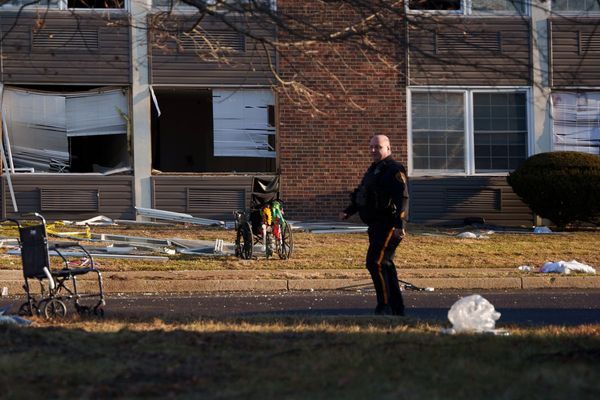
A man has been arrested after environmental activists claimed responsibility for sabotage attacks on fibre optic cables outside major insurance companies.
The 29-year-old was arrested by City of London police after activists said they had cut the cables to insurance company offices in London, Leeds, Birmingham and Sheffield on Monday.
In a press release, the group, which calls itself Shut the System, said it had targeted insurers “due to their critical role underpinning the fossil fuel economy through underwriting contracts and investments”.
It circulated a photo it said showed an activist dressed as an electrical engineer reaching into a maintenance hole to cut cables next to 52 Lime Street, in the City of London financial district, where the insurance firms W/R/B Underwriting and Chaucer have offices.
Fibre optics were also targeted, according to the press release, at the insurance market at Lloyd’s of London, the Walkie Talkie building at 20 Fenchurch Street, which is the London base of seven big insurers, as well as the offices of Talbot AIG at 60 Threadneedle Street, Chubb at 100 Leadenhall Street, and AIG on Fenchurch Street. The offices of AIG in Birmingham, Markel in Sheffield and Axa in Leeds were also targeted, Shut the System said.
“If these powerful companies don’t make public statements that they will stop driving fossil fuel expansion and destroying life on Earth, then we have no choice but to stop them ourselves,” the group’s statement said. “We will not give up until insurance companies take responsible action.”
Lloyd’s of London did not respond to a request for comment, and the City of London police were understood to still be investigating which companies in its area had been affected.
Matthew Geyman, the managing director of Intersys, a cybersecurity company with offices in the City, said there had been “significant slowdown of internet speed” in the area around the time the action took place, but the network continued to function.
“There doesn’t seem to have been as much impact as I suspect the protesters hoped,” Geyman said. “This is likely because robust communication systems are designed to be resilient to these attacks.
“We noticed a significant slowdown of internet speed in the City of London at the time it happened, which suggested high contention (ie some communications links were becoming saturated or stretched as they took excess load from the damaged lines) but, beyond this, I’ve heard of very little disruption from contacts.”
Resilience to such incidents was built into the system, with redundant lines able to be used and automatic switching to backup routes, including radio and cellular links, which “happen almost instantaneously”, Geyman said. Roadworks taking place outside Lloyd’s on Thursday were “presumably to remedy the physical damage”, he added.
Shut the System emerged last year with a series of actions smashing and hurling red paint across windows at City-based insurers and more than 20 branches of Barclays Bank. At the beginning of this year it announced it had sabotaged fibre optic cables outside 55 Tufton Street, the centre of a network of rightwing lobby groups and thinktanks.
Unlike groups such as Extinction Rebellion and Just Stop Oil, whose activists commit civil disobedience and wait to be arrested, the group’s supporters act clandestinely, leaving before police arrive. On a WordPress website set up in the group’s name, a statement says the group believes it has “kickstarted a new phase of the climate activist movement” with a “campaign of sabotage targeting the tools, property and machinery of those most responsible for global warming”.
DCI Kevin Ives, head of the criminal investigation department and volume crime unit at City of London police, said: “A 29-year-old man has been arrested on suspicion of criminal damage, following reports of external cabling being damaged under the City of London on Monday 20 January.
“The man has been bailed with conditions, pending further police investigations.”







